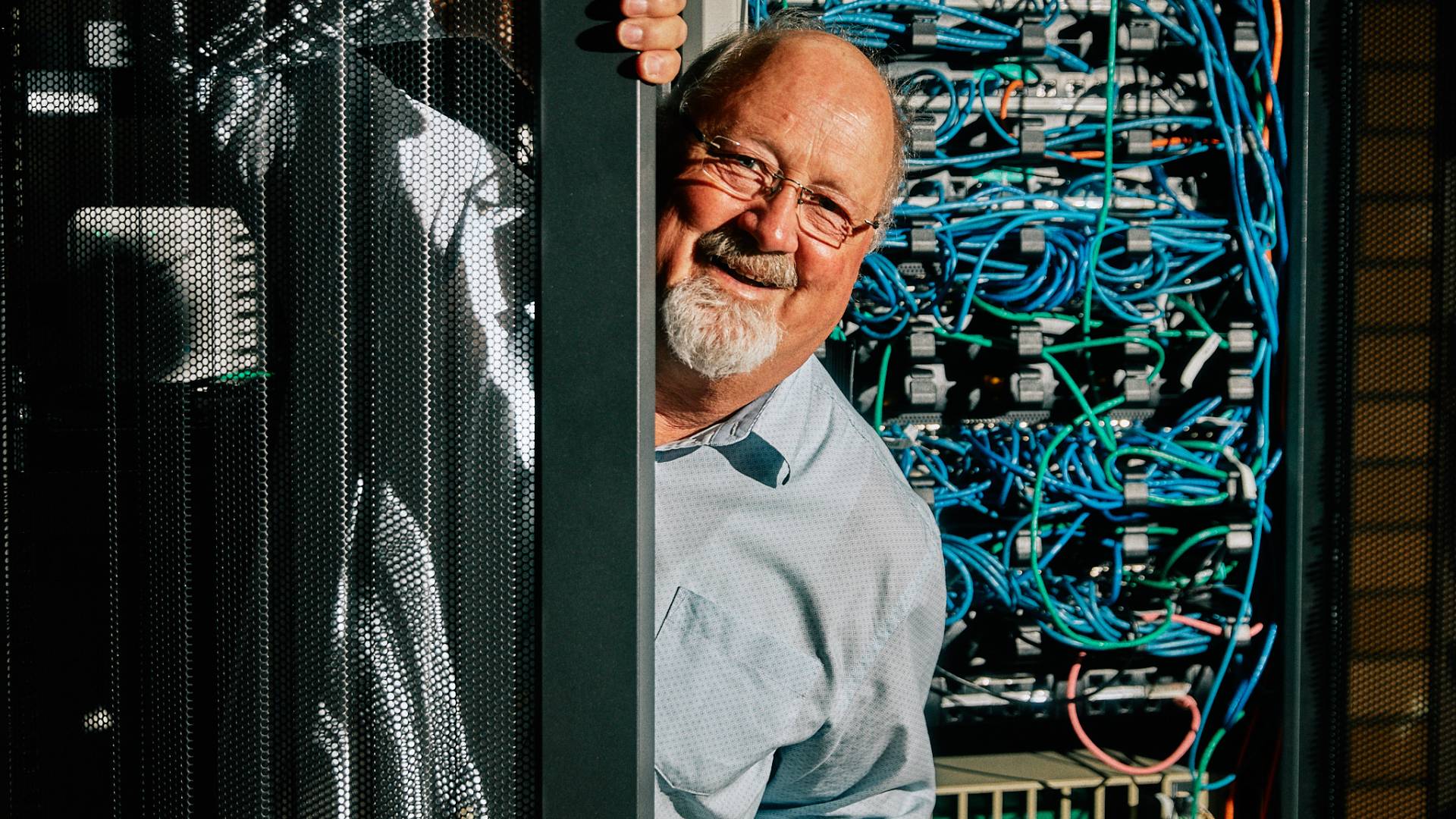This is the date and time that this news article was published.
After 44 years in the industry, possibly Warrnambool’s longest serving IT professional Peter Newell has decided to retire.
He’s worked on everything from punch cards at Fletcher Jones in the late ‘70s to sophisticated cyber security systems in modern times, and everything in between from the dawn of the internet, the Y2K scare and the rise of the smart phone.
While computer programming is reasonably common in school curriculums today, it’s not a new phenomenon, and it was during his school days that Peter first developed an interest in computers.
“The first time I was ever involved in computing was at North Tech, and they started to introduce us to computer programming using pencil-marked cards. That was in 1972 or 1973,” he said.
“Initially it was the buzz of building things that sparked my interest. Starting with a blank piece of paper, coding things and seeing it all work.”
From there, he studied at the Warrnambool Institute of Advanced Education where he became familiar with a teletype, before undertaking a multidisciplinary science degree at the Gordon Institute of Technology with post graduate studies in Bendigo, where he combined his interests of computers and geology.
“I was working on a project trying to graphically represent the data that came out of test drilling sites so that they could understand where their drill bit was going in a three dimensional sense,” he said.
It was an assignment at the Gordon, however, that eventually led Peter back to Warrnambool for a career in IT.
“I did a history and philosophy of computing subject and ended up doing an assignment about where computing was used in Warrnambool in 1975,” he said.
“I went around Warrnambool and Bill Hewitt was running computing at Fletcher Jones, and apart from that, the post office was doing a little bit of computing, the hospital, one of the supermarkets and that was about it.”
A few years later, Bill Hewitt offered him a job at Fletcher Jones and on May 14, 1979, Peter began his career as a trainee computer technician.
This involved integrating computer programs into the production, distribution and sale of the Warrnambool institution’s famous garments.
And like most computers from that era, the machine Peter used at Fletcher Jones was a sight to behold.
“The first computer I worked on at Fletcher Jones was an IBM System 3 Model 15D which was blue and grey and it looked like three or four refrigerators back to back,” he said.
“The boot device was an eight inch floppy disk and you could use a green screen terminal, or it would read punch cards.
“The back-up of the computer was on 2400 reel-to-reel tapes and printed out on the fanfold blue and white stationery.
“A 512MB disk drive was about the size of a front loading washing machine and probably weighted even more.”
With the factory beginning to wind down its operations, Peter moved across to The Standard in 1996, where he was the only IT staff member at the time.
“The first person to walk into that organisation came in at 6am and the last left at 2am, so if you wanted exclusive use of the computer systems for maintenance, you had a window of about four hours in the very early morning,” he said.
He started managing the Warrnambool City Council’s Information Services department in 1998, with his first major project preparing for Y2K.
He and his team spent “many, many, many” hours testing systems to ensure they would continue to operate properly once the year rolled from 99 to 00.
“I recall shutting down all of our computer systems on New Year’s Eve, and starting them up afresh on New Year’s Day and they all came back up and everything was fine,” he said.
“You could argue that it was never really a thing, or maybe it was that a lot of good work was done throughout the industry to avoid any issues.”
As well as successfully navigating Y2K, Peter has also overseen Council’s digital transformation over the past 25 years, with computers and the internet incorporated into the way that all sections of the organisation function.
“When I started it was right on the changeover between electronic typewriters and word processing,” he said.
“In 1998 the people using computers were mostly the nine to five staff. Now all parts of the organisation use computers from AquaZone at 6 o’clock in the morning to the night show at Flagstaff Hill and everyone else.”
And it’s a love of people and helping them to achieve their goals that has kept Peter engaged throughout the years.
“Probably the biggest project I’ve been involved with here was the implementation of Technology One, but mostly it’s the people that you work with that I’ll remember – I was lucky to work with all parts of the organisation,” he said.
“It’s really about being the conduit to helping people and the business achieve what it is trying to do and giving people the tools they need to do the job the best that they can.
“One of the things about IT is that if you’ve done a good job, nobody can tell, everything just works.”
While he will spend less time with computers in retirement – he plans to travel, visit family, cycle and ride his motorbike – he’s also eager to tinker away with his other passion, video editing, and continue his love of creating things with computers and sharing that joy with the people around him.
